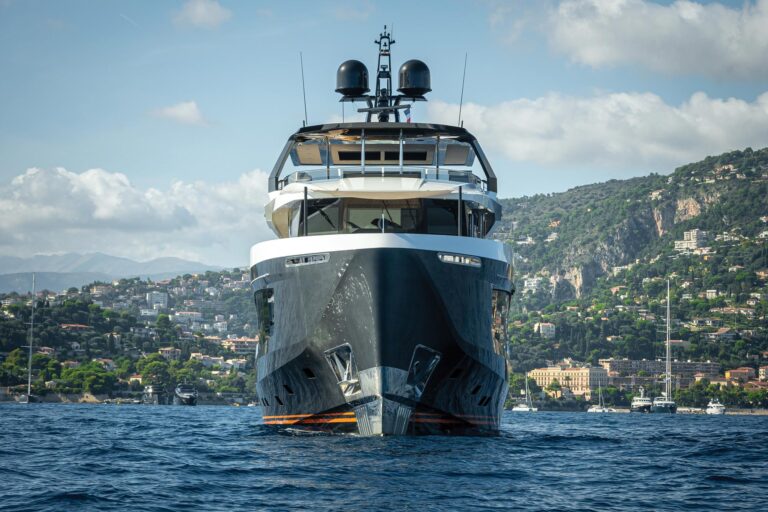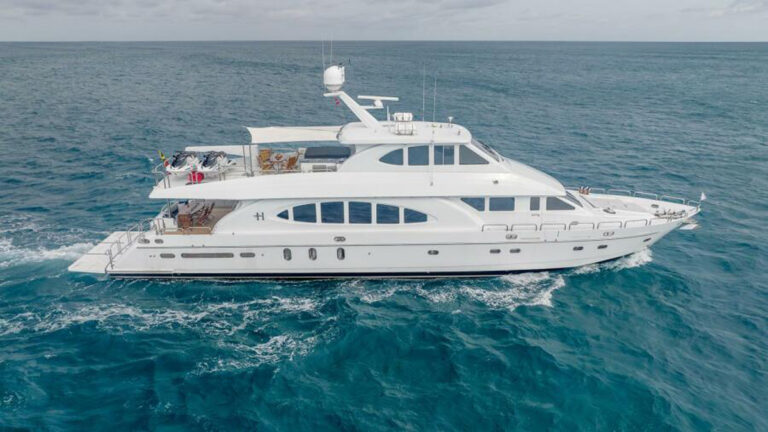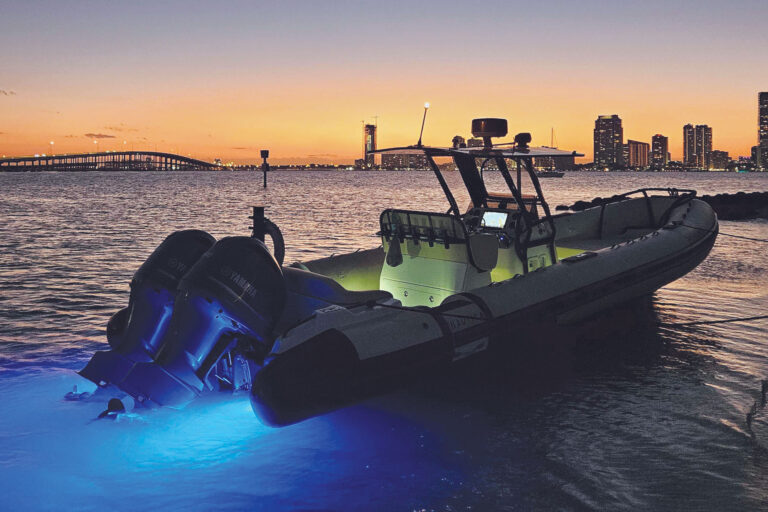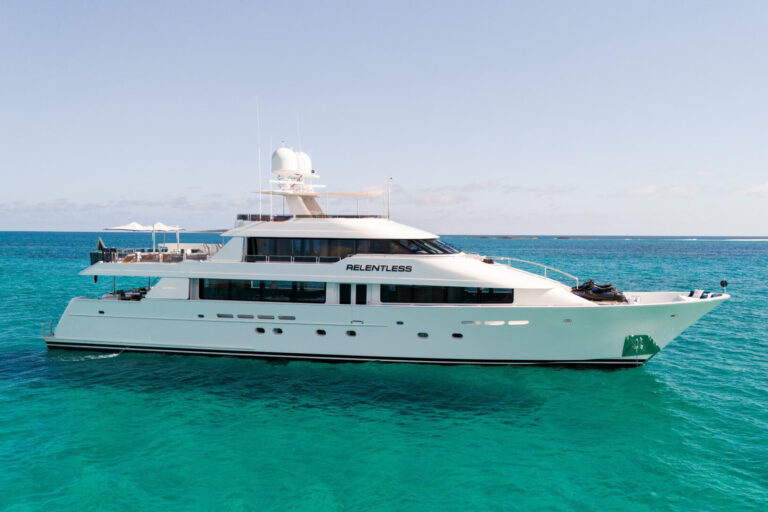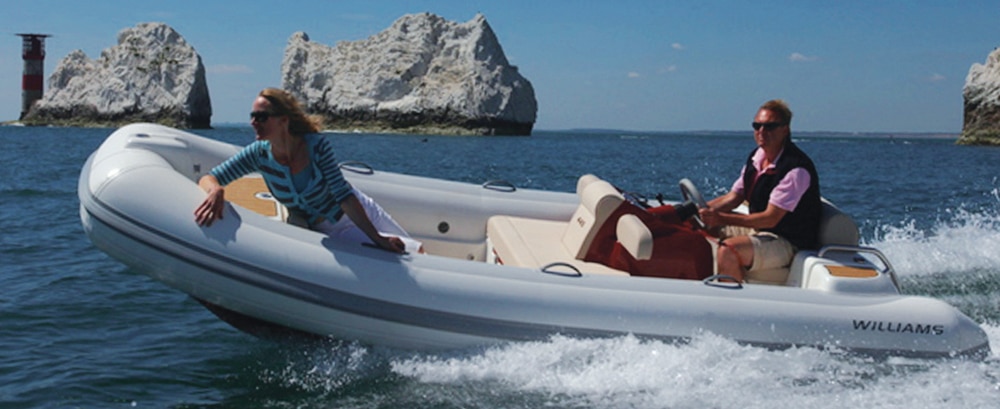
5 New Tricks For Tenders
Mac Waldorf equipped his new boat with everything he needs: It has a Garmin chart plotter, the latest stereo equipment with an iPod adapter and a comfortable seating area for entertaining with cold drinks.
It’s also his tender.
Waldorf, from Bay Harbor, Michigan, owns Wrapsody, a Tiara 5200. He used to think of his tender as a tool for ferrying passengers and gear, just as most yacht owners do, and he had a 12-foot Avon inflatable that was used strictly for those purposes. But he just took delivery of a Nautica International Nano 18 (www.nauticaintl.com), and now he has a do-everything boat, ready to cruise the harbor with a cold soda from the integrated cooler and pull the kids on wakeboards or tubes.
“What we were looking for was a tender that, once we were on the anchor, we could jump in and spend the day traveling around and sightseeing,” he said. “It will be so much easier.” For advice on choosing a tender, see “Respect Your Tender“.)
The faster, more stable Nano 18 fit the bill: Its hard-fiberglass bottom is slightly narrower than his former tender’s, which decreases the overall weight, making it easier to tow from Wrapsody. Thanks to its custom layout, it has seats down the port side with the driver’s console to starboard — no sitting on the tubes for Waldorf’s family and friends. Lower gunwales mean easy on and off, and the Nano 18 also provides a smooth ride in the often rough waters of Lake Michigan. “In chop or waves, the way the boat’s designed, the tubes can take up the shock and cut down spray,” Waldorf said.
Just as many ideas for yachtsmen trickle down from the large-yacht market, so it goes with more versatile tenders. Have you had a look at the latest tenders? Here’s what today’s small boats can do for you:
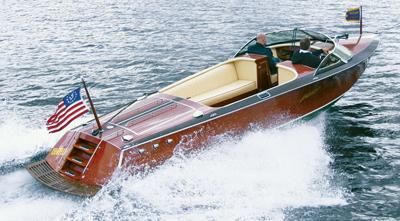
1. Turn Heads
Making an impression with the big boat is one thing — but quieting the crowd with a tender at the best dock-and- dine watering hole in the harbor is something else. Frauscher (www.frauscherboats.com) makes runabouts that hark back to the heyday of play on the Riviera, but with a futuristic edge. Updates of classic mahogany runabouts such as those built by Hacker-Craft (www.hackerboat.com) catch the glint of the sun in gleaming mahogany. The Corsair line from Chris-Craft (www.chriscraft.com) cuts a familiar profile from stem to trademarked tumblehome, but with teak packages and color schemes that let an owner complement the mothership or create a striking contrast.
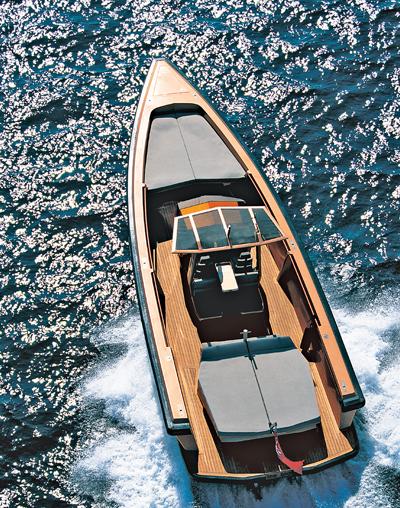
2. Make a Splash
High-end tenders for superyachts, such as the 45-foot WallyTender (www.wally.com), and the range of center consoles, walkarounds and sport yachts from Intrepid Boats (www.intrepidboats.com) can open up a world of activities once the mothership has dropped the hook. Water skiing, wakeboarding, blue-water and inshore fishing, diving and exploring are all on the menu. Smart design features such as open transoms, hull-side dive doors and clever cabin spaces expand the options even more. “We go to a location and tie the big boat up for a month at a time, but we’ll use the Intrepid every day,” says Capt. Rob Loveall, skipper of Annastar, a 117-foot Delta that tows an Intrepid 40 Open. “We won’t go anywhere without it. Everything’s painted to match — the Intrepid looks just like the big boat — and the Intrepid gets more head turns than the big boat gets.”
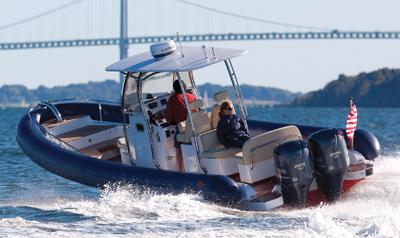
3. Blow It Up
Rigid-hull inflatables have also gotten better, and better, looking. Add in custom features and the results are boat owners who can’t wait to tie up so they can launch the tender. The use of high-tech composites has reduced weight, while improved designs have meant even better performance. And while the SEAL-team cachet is part of the appeal, it often has a decidedly teaked-out twist. The HBI 30 from Hunt (www.hbiboats.com) uses an efficient hull design and custom features to deliver a lightweight, versatile tender package. Depending on the tender’s purpose, Hunt offers a selection of power options including single and twin outboards, inboard and jet power. Plenty of stowage and seating for up to 14 add to the utility while guest comfort is met with a stand-up head and shower in the console. Pure Yachting (www.pureyachting.com) of Newport, Rhode Island, builds a series of high-end RIBs ranging from 14 to 24 feet with the hull and decking fabricated from carbon fiber, Kevlar and Corecell foam coring. The 14-foot-9-inch Pure 450 can take a 70-horsepower outboard and weighs only 285 pounds. Even the 24-foot Pure 730 weighs in at a svelte 1,204 pounds. In addition to reducing the boat’s overall weight, the higher-tech materials improve sound-deadening and strengthen the hull to provide a quiet ride in chop. Fully custom models in the Grand Tourers series from British manufacturer Rib-X (www.rib-x.co.uk) can be matched in color and style to the mothership. Distinctive designs set these boats apart. Williams Performance Tenders (www.williamsjettenders.com) use clever deck arrangements to seat the whole crew comfortably and safely, but also offer performance and speed with jet power.
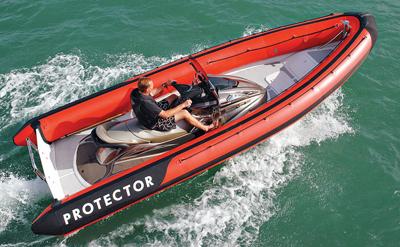
4. Break the Mold
The Jet 20 from Protector (www.protectorboats.com) is a 20-foot RIB built around a Yamaha FX Cruiser SHO personal watercraft mounted permanently in the middle of the larger boat. The driver operates the boat from the FX Cruiser’s saddle. The craft is equipped with a cruise-assist, no-wake mode to make it more manageable when running at slow speeds and has reverse for full maneuverability. The combined unit weighs 1,700 pounds with a 7-foot, 6-inch beam. Another boat that takes do-everything to the next level is SeaLegs (www.sealegs.com), built in New Zealand. Two wheels on the transom and one at the bow fold down on hydraulic struts, allowing the boat to lift off the ground and drive on land at speeds up to 10 mph, thanks to a 24-horsepower air-cooled Honda engine under the helm seat. On the water, the 20- foot (6.1-meter) RIB is powered by an Evinrude 115 hp E-Tec outboard. With the wheels folded up and out of the way, it has a draft of 16 inches and can carry up to 1,100 pounds — that’s on water or land. A 23-footer is also available.
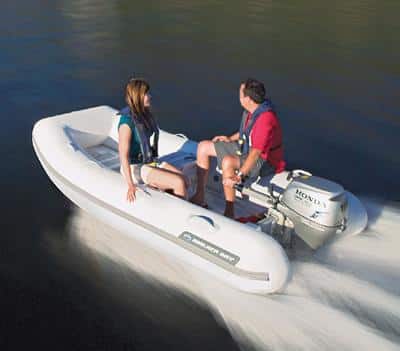
5. Lose Weight
Walker Bay (www.walkerbay.com) builds its Genesis series RIBs with hulls formed out of injection-molded plastic instead of fiberglass to save weight. “They’re nice because they’re bulletproof,” said Jarrett Bryzek, owner of International Yacht Network in Fort Lauderdale, Florida. “You can bend them; you can’t break them.” An 11-foot, 2-inch 340 Console Genesis weighs 226 pounds without the motor and has a carrying capacity of 1,331 pounds. Comparatively, the Oceanus 11 VST from AB Inflatables (www.abinflatables.com) is 11 feet long, weighs 370 pounds and carries 1,318 pounds. Nautica International saves approximately 120 pounds per boat in the Nano series by going with powder-coated aluminum framing for the seat construction. Lighter tenders also give boat owners more options to find a boat that fits their current davit system. “We had sailboats with light-capacity davits and up until now they could only have a tiller-steered tender or a jet ski,” Bryzek explained. “But people don’t want a jet ski, they want a console tender,” he added.





